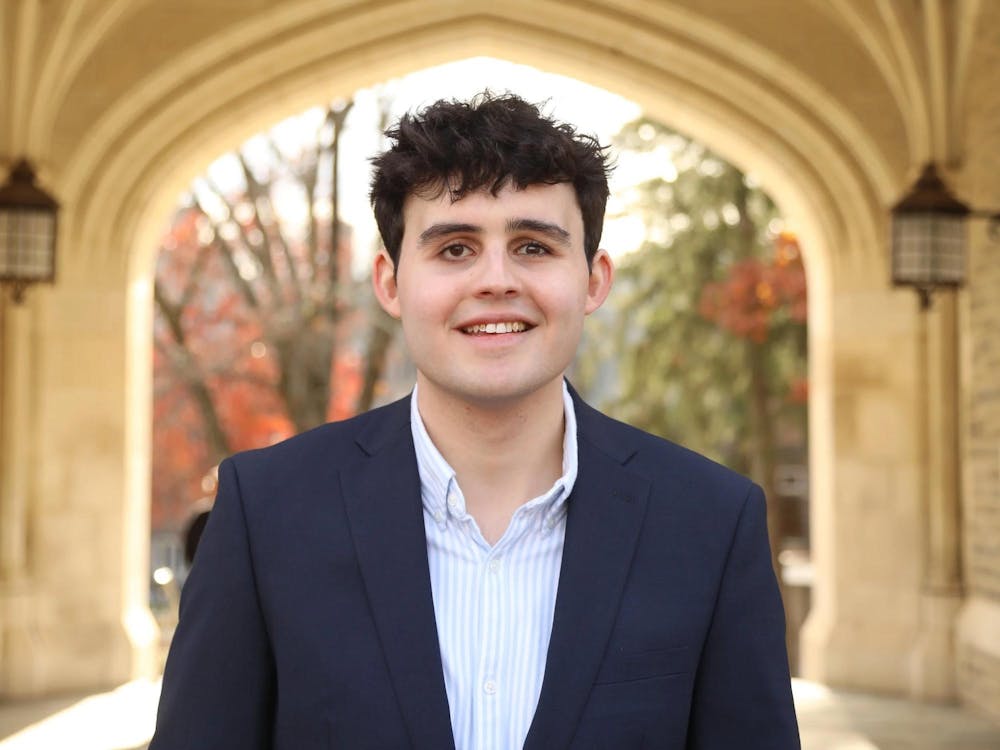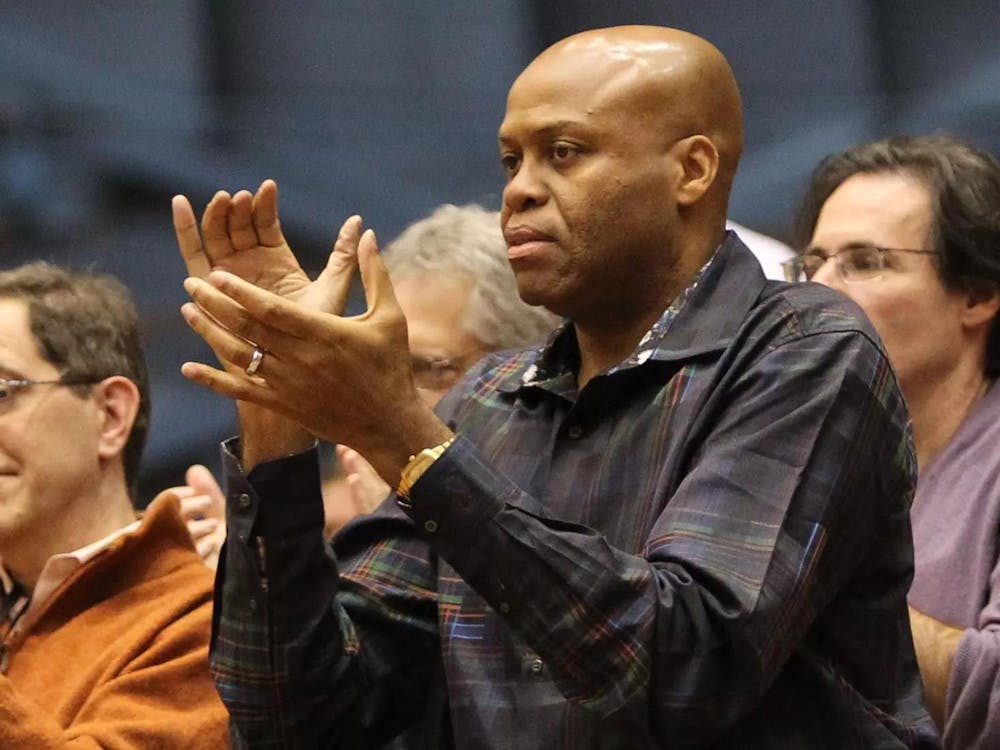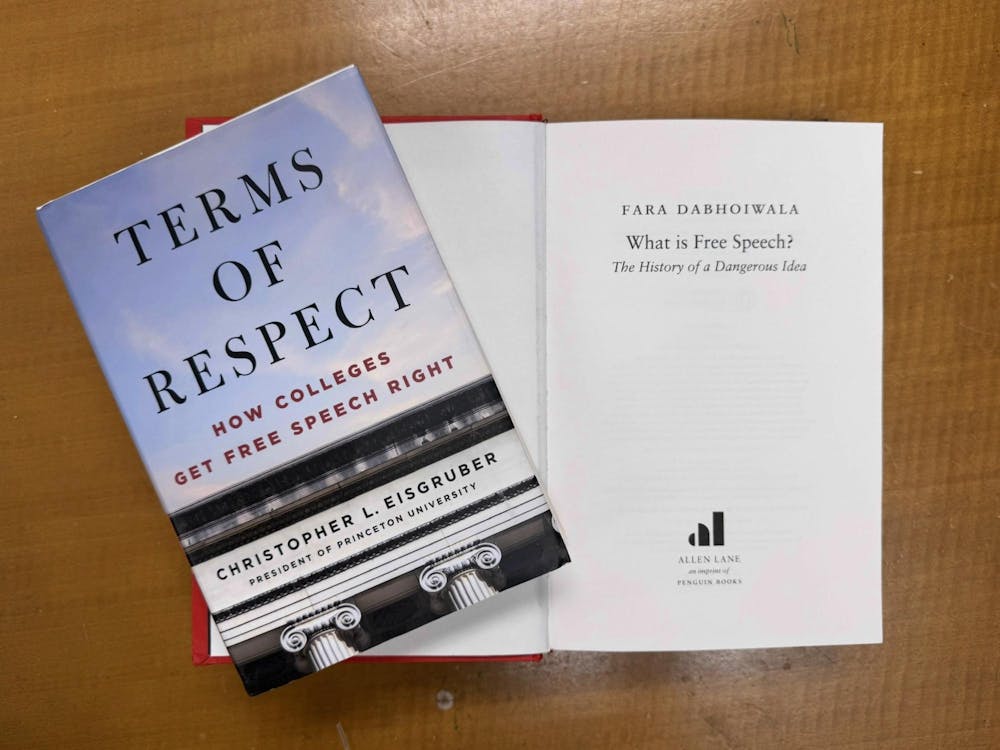A small Georgian-style brick house is nestled between the Princeton Garden Theater and P.J.'s Pancake House on 158 Nassau Street, just beyond FitzRandolph Gate.
The style of the house is similar to that of another brick house — the Maclean House next to Stanhope Hall on campus— that may be more familiar to students. Like Maclean, it contains intricate woodwork and decorative paneling that exemplifies the solid, Georgian style of architecture popular in the Philadelphia area in the mid-18th century.
Unlike Maclean, however, the house on 158 Nassau Street is an important center for preserving stories of the people and the town of Princeton.
Built more than two centuries ago, the building — known as the Bainbridge House — has been used as a private home, University dormitory and public library. Today Bainbridge is home to the Princeton Historical Society.
Though the Bainbridge House is now used as the permanent headquarters for the Historical Society, the house itself has a rich and varied history. Throughout the 18th century, the house underwent alterations to accommodate the individual needs of the prominent families that once called Bainbridge home.
Princeton resident Job Stockton built Bainbridge for his wife in 1766 and ran his tanning business out of the backyard. Upon his death in 1771, he bequeathed the home to his brother Robert, who would later serve as Quarter-Master of the American Army during the Revolution.
Robert rented the house to Dr. Absalom Bainbridge, whose son William was born in the house in 1774. William became a commander in the War of 1812 and commodore in the U.S. Navy only to achieve national fame during his dealings with the Barbary Pirates. William's career is only more impressive when juxtaposed with his father's Tory sympathies during the Revolution. Dr. Bainbridge relocated to New York in 1777 after facing ostracism for his Loyalist views; the final installment of Bainbridge's rent to Stockton was never paid.
After being passed to Stockton's widow and their daughter, in 1871 the house was sold to the University, known then as the College of New Jersey. For the next three decades, the house served as a boarding house and dormitory for students. In 1910, the University leased the house to the Borough for use as a public library. Restoration of the house followed, making several changes to the façade and foundation that allowed for more light and book-shelving space.
Meanwhile, across town, the Historical Society of Princeton, whose aims were to "collect, record and publish information pertaining to the history of the community and the University," was founded by William L. Ulyat in 1938. It soon grew too large to continue meeting in private homes. The success of an exhibit held in the 1930s called "Princeton: A Pictoral History" gave credibility and reknown to this society, one capable of offering resources and activities to the community at large.
So when the public library vacated the Bainbridge House, the society became its next tenant. Since then, the University has provided Bainbridge House to the society for a rent of one dollar a year.

Today, Bainbridge House displays current images and antiques that offer both the tourist and the Princeton resident a unique perspective on the town's evolution.
One exhibit rotates through the society's first floor period rooms every 10 to 12 months, explained Director of the Historical Society Gail Stern. The exhibits are always limited to Princeton, but have ranged from profiles of ethnic communities to parasols and dollhouses.
"Exhibitions are so time consuming and expensive," Stern explained. "We are limited to Princeton because that's our mandate and our mission. [We try] to fill in a lot of the gaps in Princeton's history."
Stern explained how the focus of the exhibits has changed over the years. "A focus used to be on 18th century, upperclass, Anglo history. Lately, we've tried to fill in the gaps of ethnic and economic history," she said.
The society's current exhibit showcases 130 photographs taken by staff photographers at Princeton's local newspaper, The Princeton Packet. In a departure from the standard relics the society usually displays, the exhibit entitled "Today's News, Tomorrow's History: Princeton Packet Photos" contains photographs of current residents and their daily activities taken in the past 25 years.
"We've had many exhibits about old, beautiful things – antiques. Now, we do exhibits about events and social histories," Stern said. "We try to illustrate these stories with 'things'." She said that this change from the inanimate to animate occurred in the 1970s when there was a general vested interest in developing the study of social and cultural histories.
According to Stern, the exhibit came about with the donation of 18,000 Packet photographs to the society. Over the span of two years, curators Maureen Smyth and Ilene Dube indexed and chose 130 prints to display. "The photos weren't organized and they were piling up," Stern said. The collection dates from the last quarter century and depicts places, the events, the achievers, the rebels, the refugees and the children everyone's familiar with.
With the exhibit focused solely on photography, Stern explained that the society's curators had a two-fold responsibility when creating this display. These exhibits, unlike those in art museums, must present interpretations as well as the item itself.
"We explain context and content of the photograph. It's an interpretive rather than a visual approach," Stern said.
"We are trying to get people to understand the nuances of history and that it is right up to the present. It's not just about famous people. Everyone is a part of history," she concluded.







